Kandahar is a region of Afghanistan with a rich and diverse array of bird species. The province is home to a variety of habitats, from deserts to wetlands, that provide a home for many different species of birds.
The region is a popular destination for birdwatchers, as it is home to some rare species of birds, such as the White-eyed Buzzard, the Great Spotted Cuckoo, and the Asian Paradise Flycatcher.
There are also a number of migratory birds that pass through the area, including the Bar-headed Goose, Black Stork, and Eurasian Hobby. With so much to offer, Kandahar is an excellent place for bird lovers to visit and enjoy the splendor of nature.
1. Bar-headed Goose
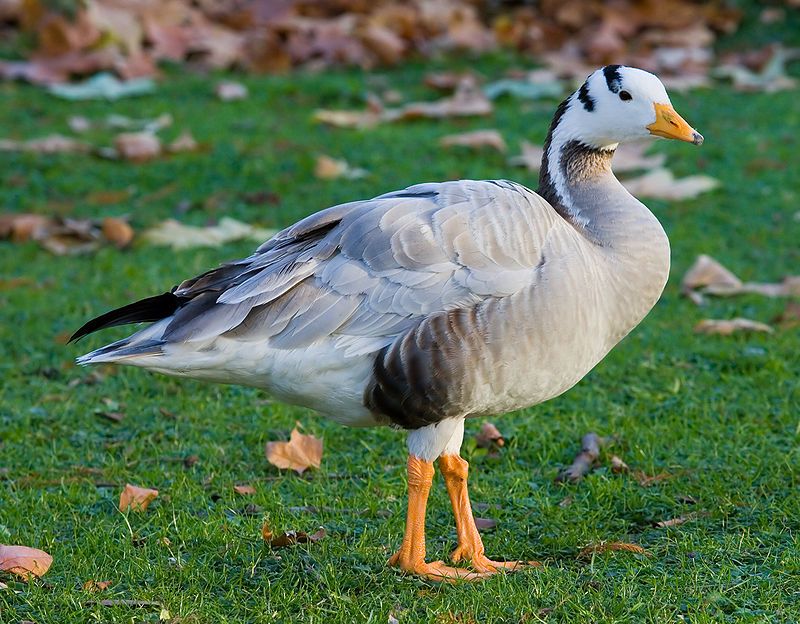
The bar-headed goose is a species of goose that is found in Central Asia. It breeds in large colonies, often numbering in the thousands, near mountain lakes. During the winter months, the bird migrates southwards to places as far as peninsular India.
Each nest contains three to eight eggs and the species is renowned for its ability to fly over the Himalayas at extreme altitudes.
During its migration, the bar-headed goose can be seen flying in large flocks, usually taking advantage of thermal updrafts to help them soar to great heights.
This species is incredibly well adapted to the harsh Himalayan climate and is capable of surviving in temperatures as low as -20°C.
The bar-headed goose is an amazing species and its ability to thrive in such an extreme environment is a testament to the bird’s hardiness and remarkable adaptability.
| Kingdom | Animalia |
| Phylum | Chordata |
| Class | Aves |
| Order | Anseriformes |
| Family | Anatidae |
| Genus | Anser |
| Species | A. indicus |
2. Common Kingfisher
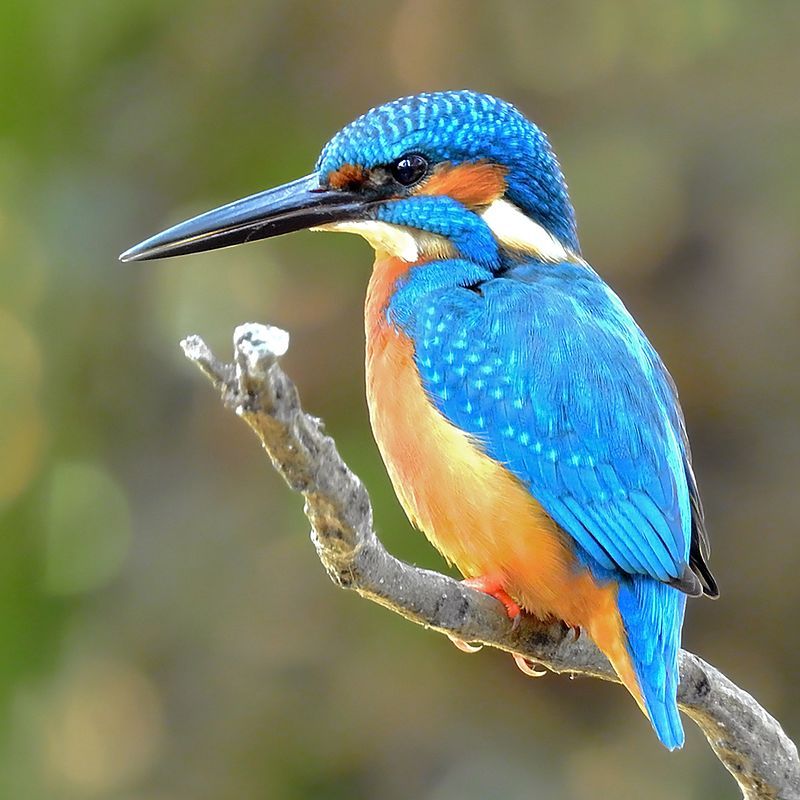
The common kingfisher, also known as the Eurasian kingfisher and river kingfisher, is a small bird in the kingfisher family. It has seven distinct subspecies, each found in different parts of Eurasia and North Africa.
It is a resident species in most of its range, meaning that it stays in the same place all year round. However, it will migrate away from areas where the rivers freeze in winter, in search of warmer climates.
Its wide distribution across Eurasia and North Africa makes it a very successful species. The common kingfisher is mainly found near freshwater streams and rivers, where it feeds on small fish and aquatic invertebrates.
It has a bright and colorful plumage, making it easy to spot in its natural habitat. Its distinctive call is a loud, high-pitched ‘kivit’ sound. The common kingfisher is a beloved and cherished species, both for its beauty and its important role in the environment.
| Kingdom | Animalia |
| Phylum | Chordata |
| Class | Aves |
| Order | Coraciiformes |
| Family | Alcedinidae |
| Genus | Alcedo |
| Species | A. atthis |
3. Rock Pigeon
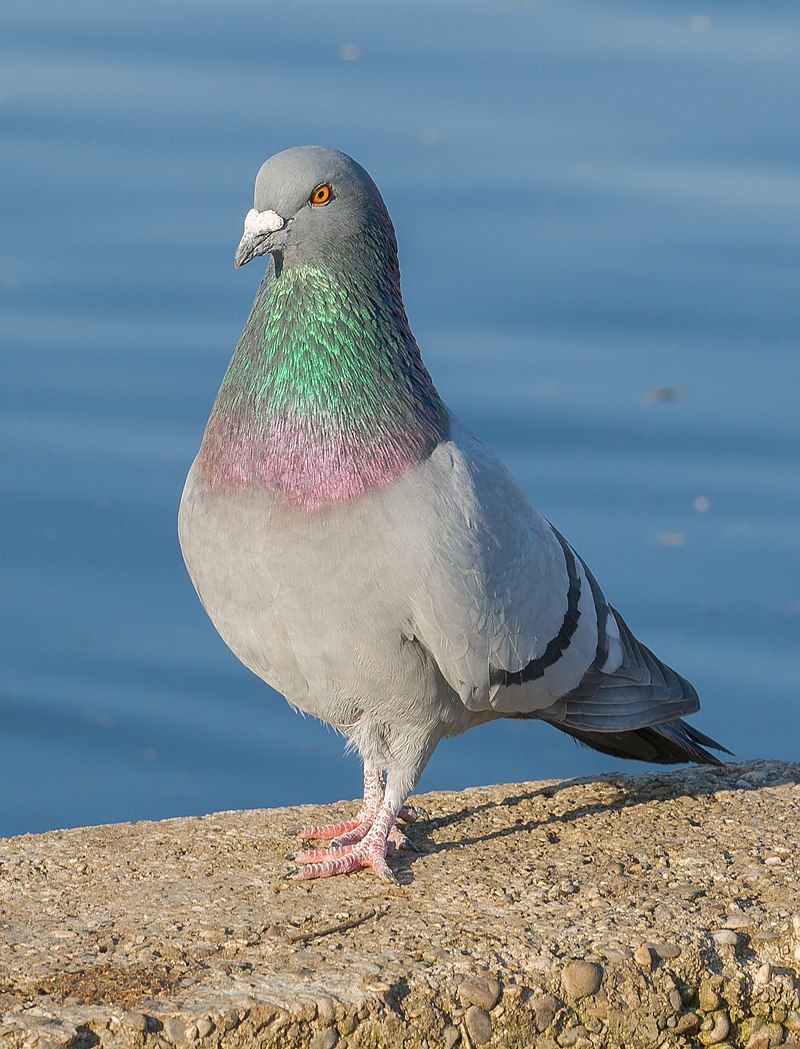
The rock dove, also known as the rock pigeon or common pigeon, is a species of bird belonging to the Columbidae family. It is commonly referred to as the “pigeon” in everyday speech. The domestic pigeon is descended from this species.
Over time, some domestic pigeons have escaped and joined wild populations, resulting in a large increase in the number of feral pigeons around the world.
This is particularly the case in urban areas, where these birds have become accustomed to human presence and are often seen foraging for food and nesting on buildings.
Feral pigeons are now a common sight in many cities, providing a source of entertainment and fascination for many people.
| Kingdom | Animalia |
| Phylum | Chordata |
| Class | Aves |
| Order | Columbiformes |
| Family | Columbidae |
| Genus | Columba |
| Species | C. livia |
4. Eurasian Collared Dove
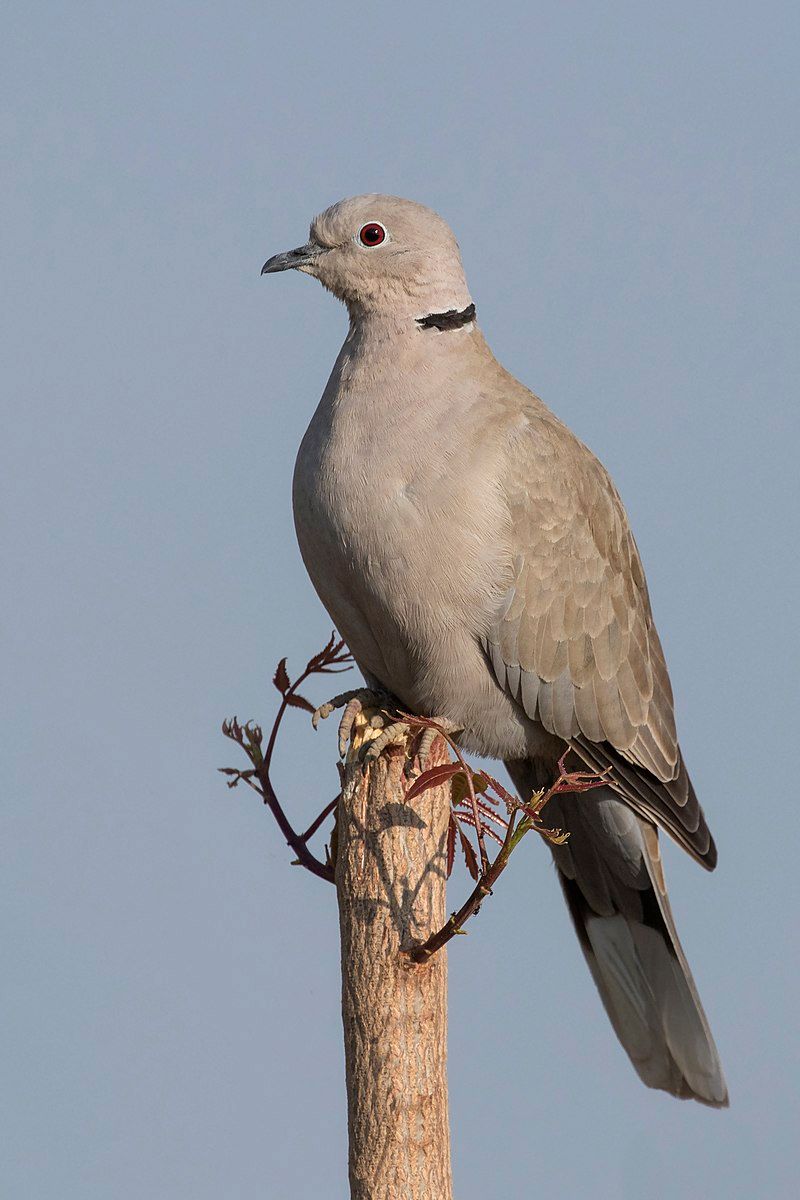
The Eurasian collared dove is a species of dove native to Europe and Asia. It is believed to have been introduced to Japan, North America, and islands in the Caribbean by humans in the 1970s.
This species of dove is known for its distinctive black collar around the neck, which is why it is also known as the ringed turtle dove.
The Eurasian collared dove is now a very common species in many parts of the world. In its native habitat, the Eurasian collared dove is found in open woodlands, grasslands, and urban areas. It usually feeds on the ground, eating grains, seeds, and insects.
It is also known to eat fruit, such as cherries and plums, which it can access in urban environments. The Eurasian collared dove is an adaptable species, which is why it has been able to spread quickly in areas where it has been introduced.
It is also known to be very social, with flocks often gathering in groups of up to 50 birds.
This species is also known to mate for life, with pairs often remaining together for several years. The Eurasian collared dove is a popular bird among birdwatchers, as it is easily seen and identified due to its distinctive markings.
It is also a very vocal species, with a variety of calls, including a distinctive three-syllable cooing sound. The Eurasian collared dove is an important species in many ecosystems, as it helps to disperse the seeds of many plants, providing food for other wildlife species.
| Kingdom | Animalia |
| Phylum | Chordata |
| Class | Aves |
| Order | Columbiformes |
| Family | Columbidae |
| Genus | Streptopelia |
| Species | S. decaocto |
5. Black kite
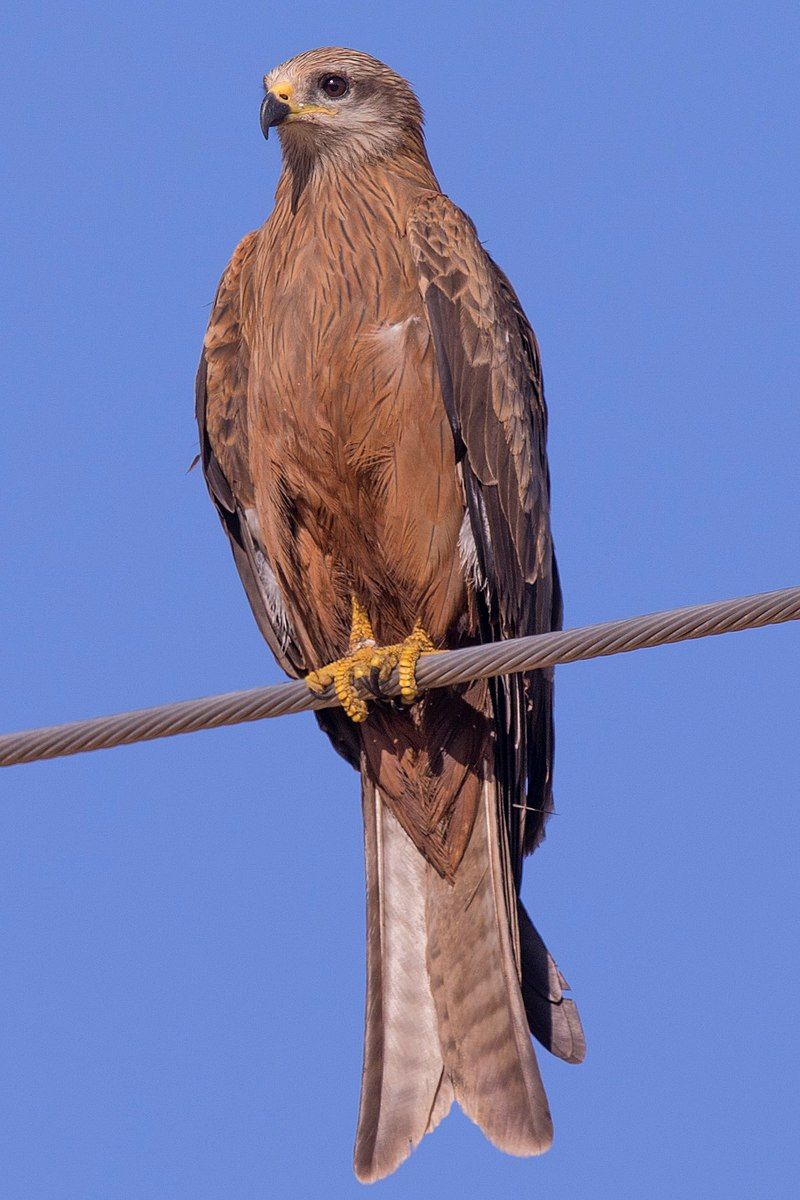
The black kite is a bird of prey that is part of the Accipitridae family. This family also includes many other diurnal raptors, which are birds that hunt during the day. The black kite is believed to be the most abundant species of Accipitridae in the world.
However, some of its populations have seen significant decreases in numbers or fluctuations in population size. This can be caused by a variety of factors, such as habitat loss, hunting, and climate change.
It is important to understand and monitor population trends in order to ensure that the species is able to survive and thrive in the future.
| Kingdom | Animalia |
| Phylum | Chordata |
| Class | Aves |
| Order | Accipitriformes |
| Family | Accipitridae |
| Genus | Milvus |
| Species | M. migrans |
6. Ruddy Shelduck
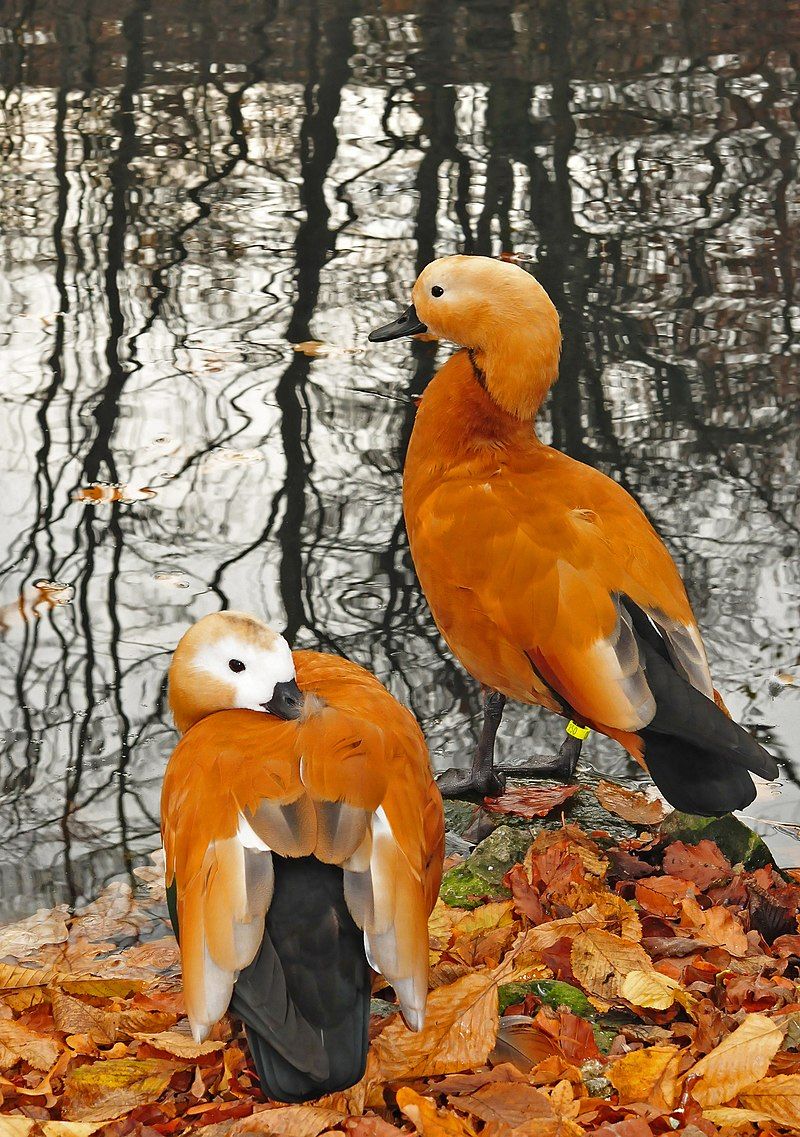
The ruddy shelduck, also known as the Brahminy duck, is a species of waterfowl belonging to the family Anatidae. It is a fairly large bird, measuring between 58 and 70 cm in length, with a wingspan ranging from 110 to 135 cm.
The species is characterized by its reddish-brown plumage, which is often mottled and streaked with lighter colors. Its wings are also often marked with black and white stripes. The species has a distinctive long, pointed bill, and its tail is typically held upright.
The species is native to India and is found in a variety of wetlands, including rivers, lakes, marshes, and estuaries. They feed primarily on aquatic vegetation, but will also eat insects, mollusks, crustaceans, and small fish.
In addition, they are known to scavenge for food on the ground. The species is considered to be of least concern by the IUCN, as its population is relatively stable and it is found in a wide range of habitats.
| Kingdom | Animalia |
| Phylum | Chordata |
| Class | Aves |
| Order | Anseriformes |
| Family | Anatidae |
| Genus | Tadorna |
| Species | T. ferruginea |
7. White-headed Duck
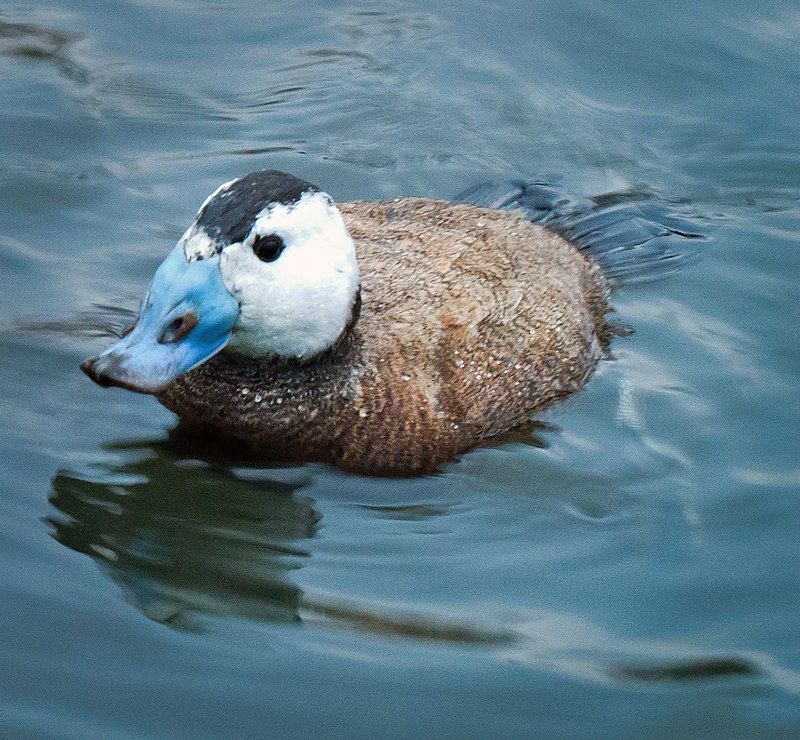
The white-headed duck is a small diving duck that is about 45 cm in length. It has distinctive characteristics that make it easy to identify. The male of this species has a white head with a black crown, a blue bill, and reddish-grey plumage.
The female, on the other hand, has a dark bill and a duller coloration. The white-headed duck generally prefers to breed in lakes that have both open water and dense vegetation around the edges. This provides the duck with a safe environment for nesting and foraging.
The vegetation provides protection from predators and also serves as a food source. The open water allows for easy access to the duck’s food sources, such as aquatic plants, crustaceans, and insects.
In addition to its preferred habitat, the white-headed duck is also known for its migratory behavior.
It is typically found in the temperate regions of Europe, Asia, and North Africa, and it migrates to the warmer climates of Africa, South Asia, and the Middle East during the winter.
Overall, the white-headed duck is an interesting species that is easy to identify due to its distinct coloring and features. It is also an important species for its migratory behavior and its particular preference for lakes with open water and dense vegetation.
| Kingdom | Animalia |
| Phylum | Chordata |
| Class | Aves |
| Order | Anseriformes |
| Family | Anatidae |
| Genus | Oxyura |
| Species | O. leucocephala |
8. Ibisbill
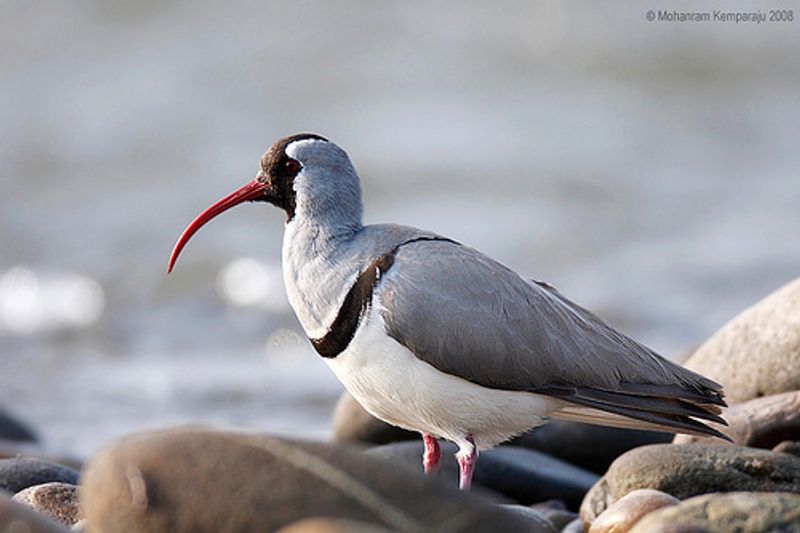
The ibisbill is a unique bird, belonging to the family Ibidorhynchidae. It has a distinct grey plumage on its body, with a white belly, and striking red legs.
Its most distinguishing feature is its long, curved beak that is black on the top and black on the underside. This species is only found in the high plateau of central Asia and the Himalayas, living along the banks of shingle rivers.
It is an elusive bird, adapting to the harsh climate of the region, and is capable of living in altitudes of up to 5,000 meters. The ibisbill is an endangered species, as its natural habitat is increasingly being disturbed by human activity.
It is a migratory species, with some populations traveling as far south as India during winter.
The ibisbill is also threatened by predation from larger birds, as well as by pollution and the drying up of its habitats. The ibisbill is an interesting bird, and its conservation is a priority to ensure its continued survival.
| Kingdom | Animalia |
| Phylum | Chordata |
| Class | Aves |
| Order | Charadriiformes |
| Family | Ibidorhynchidae |
| Genus | Ibidorhyncha |
| Species | I. struthersii |
9. See-see Partridge
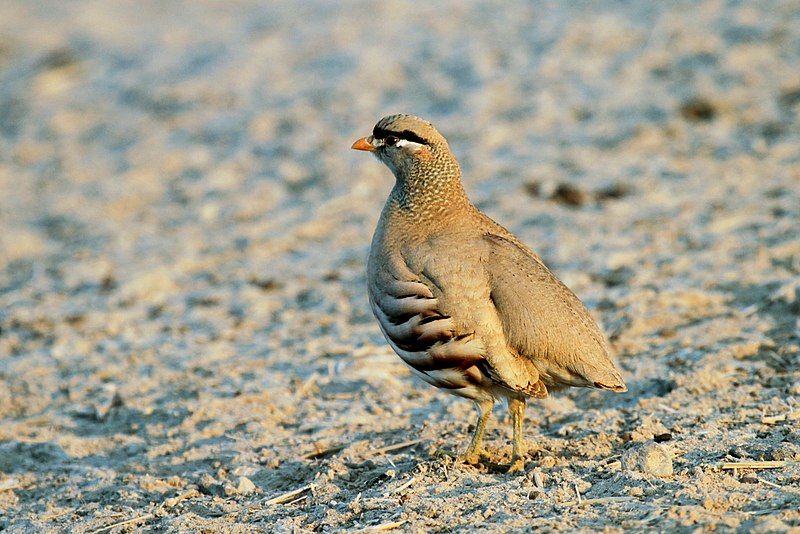
The See-See Partridge is a species of gamebird that belongs to the family Phasianidae of the order Galliformes. These birds are also known as gallinaceous birds, which are characterized by their strong legs and feet, large body size, and round body shape.
This partridge is native to the Middle East, where it can be found in countries like Turkey, Syria, Iraq, Iran, and Pakistan. It is a common species in these countries and is widely distributed across the region.
It has also been introduced to other countries in Europe, Asia, and North America, where it is often found in parks and gardens. The See-See Partridge is a ground-dwelling bird that prefers to live in open, grassy areas.
It feeds mainly on seeds, fruits, leaves, insects, and other small invertebrates. It is also known to eat some cultivated grains and crops such as wheat and barley. It is an omnivorous species and is an important game bird in the region, being hunted for sport and food.
It is also popular in falconry, where it is used as a quarry bird. This species is highly social and usually forms small flocks when foraging. It is also known to mate for life and is quite territorial, defending its territory from intruders.
The See-See Partridge is a medium-sized bird, with males typically measuring between 30-42 cm in length and weighing between 200-400 g. It has a grey body, with a black and white head and neck, and a reddish-brown tail. The female is slightly smaller than the male.
Overall, the See-See Partridge is an important game bird in the Middle East and is widely distributed across the region. It is highly social and is an important species to the local economy, providing food and sport hunting opportunities.
| Kingdom | Animalia |
| Phylum | Chordata |
| Class | Aves |
| Order | Galliformes |
| Family | Phasianidae |
| Genus | Ammoperdix |
| Species | A. griseogularis |
10. Black-winged Stilt
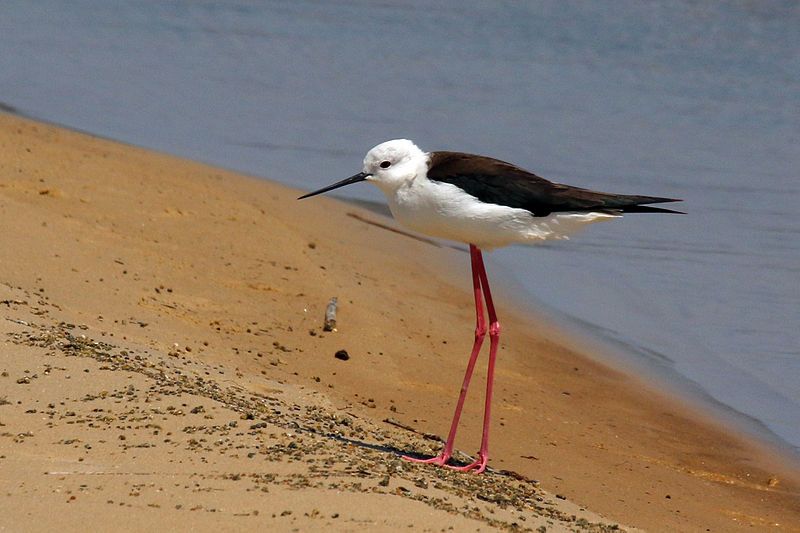
The black-winged stilt is a species of wading bird found across a wide range of habitats, from tropical wetlands to temperate coasts. It belongs to the avocet and stilt family, a group of long-legged water birds known for their graceful wading habits.
This species is also sometimes referred to by its scientific name, H. himantopus. This particular species is found in many parts of the world and is considered to be almost cosmopolitan in distribution.
The black-winged stilt has a distinctive black and white plumage, with a long, S-shaped bill and bright red legs. Its long legs allow it to wade in deeper water than most other wading birds, allowing it to access food that is out of reach for many of its competitors.
It feeds mainly on aquatic invertebrates, such as small fish, crustaceans, and insects.
It is an agile and swift flyer, and can often be seen skimming over the surface of shallow wetlands. Although the black-winged stilt is widely distributed, it is considered to be a species of least concern by the International Union for Conservation of Nature.
This is largely due to its large population size, and its ability to adapt to changing habitats. As wetlands are increasingly threatened by human development, this species is likely to benefit from conservation efforts that seek to protect these important habitats.
| Kingdom | Animalia |
| Phylum | Chordata |
| Class | Aves |
| Order | Charadriiformes |
| Family | Recurvirostridae |
| Genus | Himantopus |
| Species | H. himantopus |
11. Cotton Pygmy Goose
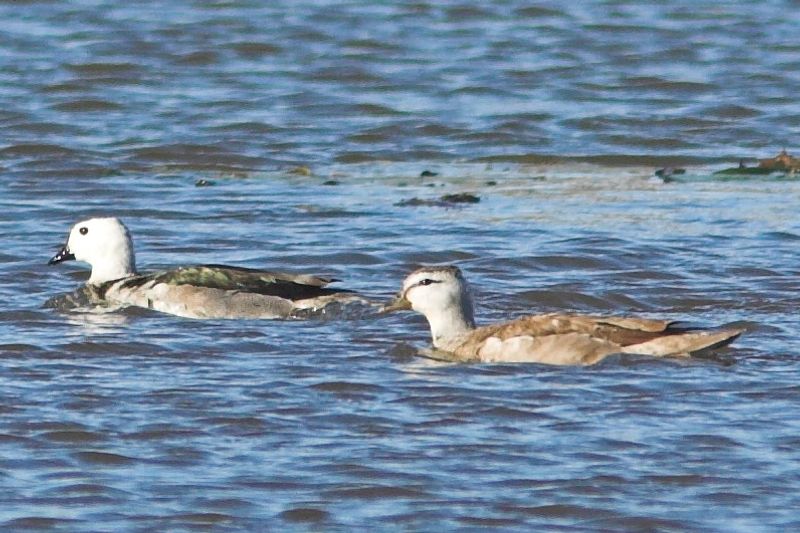
The Cotton Pygmy Goose, also known as the Cotton Teal, is a species of small perching duck that is found in many parts of Asia.
It has a wide range, extending from Southeast Asia all the way to Queensland, Australia, where it is sometimes referred to as the White-quilled Pygmy Goose. This species of duck is known for its small size and is mainly found in lowland wetlands or other watery areas.
It forages on insects, aquatic invertebrates, and plant material found in its habitat. The average length of the Cotton Pygmy Goose is between 20-25 centimeters, and its wingspan is between 35-38 centimeters.
It has a dark brownish-gray head, a white patch on its neck, and a distinctive white “quill” on its back. During the breeding season, the males have a bright-green head and chest with a white throat.
The females are brownish-gray on their head and chest, with a white throat and breast. The Cotton Pygmy Goose is an important species to conservationists as it is a key species in many wetland ecosystems around the world.
| Kingdom | Animalia |
| Phylum | Chordata |
| Class | Aves |
| Order | Anseriformes |
| Family | Anatidae |
| Genus | Nettapus |
| Species | N. coromandelianus |
12. Red-crested Pochard
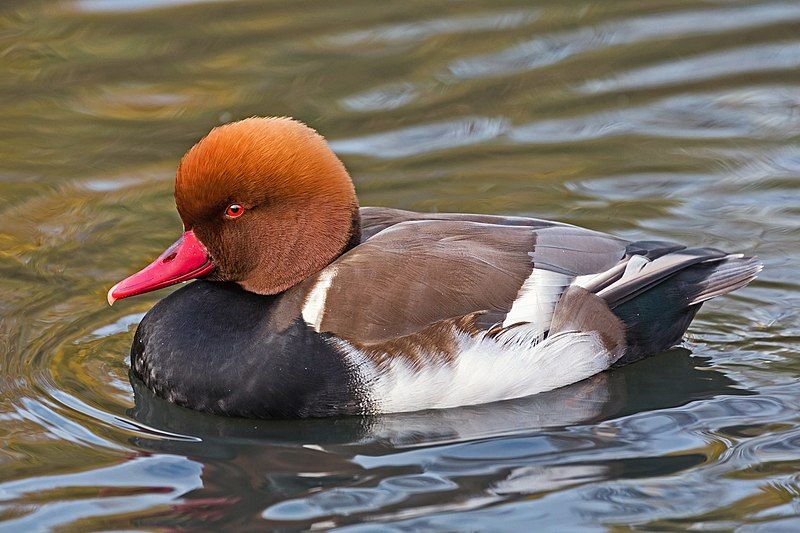
The red-crested pochard is a beautiful and impressive bird. It is a species of diving duck, found in many parts of the world.
The scientific name of this species, Netta rufina, is derived from the Greek word “Netta”, which means “duck”, and the Latin word “Rufina”, which means “golden-red”. This accurately describes the appearance of the red-crested pochard, with its golden-red crest and feathers.
The red-crested pochard is a very adaptable species, as it can be found in a variety of habitats, from wetlands to deep lakes. It is also quite a social species, often seen in flocks of many individuals.
The red-crested pochard is a beautiful and unique bird and is a treat to observe in its natural habitat.
| Kingdom | Animalia |
| Phylum | Chordata |
| Class | Aves |
| Order | Anseriformes |
| Family | Anatidae |
| Genus | Netta |
| Species | N. rufina |
13. Marbled Teal
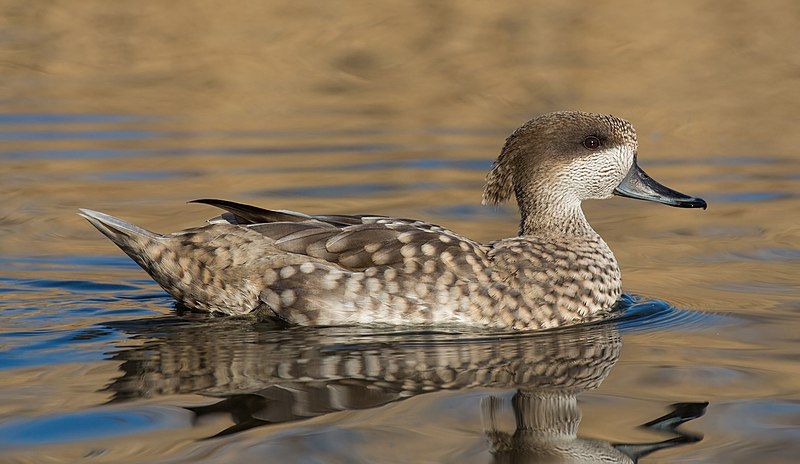
The marbled duck, scientifically known as Marmaronetta angustirostris, is a species of duck found in southern Europe, northern Africa, and western and central Asia.
It is a medium-sized duck, with its name derived from the Greek words marmaros, which means marbled, and Netta, which means duck. The Latin word angustus means narrow or small and rostris refers to the duck’s bill.
This species of duck can be identified by its distinctive marbled plumage, as well as its narrow bill. It is believed that the marbled duck may be the result of hybridization between the mallard and the red-crested pochard, which can explain its unique markings.
The marbled duck typically inhabits freshwater wetlands or lakes, where it feeds on aquatic plants and small invertebrates. It is also known to occasionally feed on seeds, grains, and cultivated crops.
The marbled duck is not considered to be threatened or endangered, but it is listed as a species of Least Concern by the International Union for Conservation of Nature.
| Kingdom | Animalia |
| Phylum | Chordata |
| Class | Aves |
| Order | Anseriformes |
| Family | Anatidae |
| Genus | Marmaronetta |
| Species | M. angustirostris |
14. Shikra
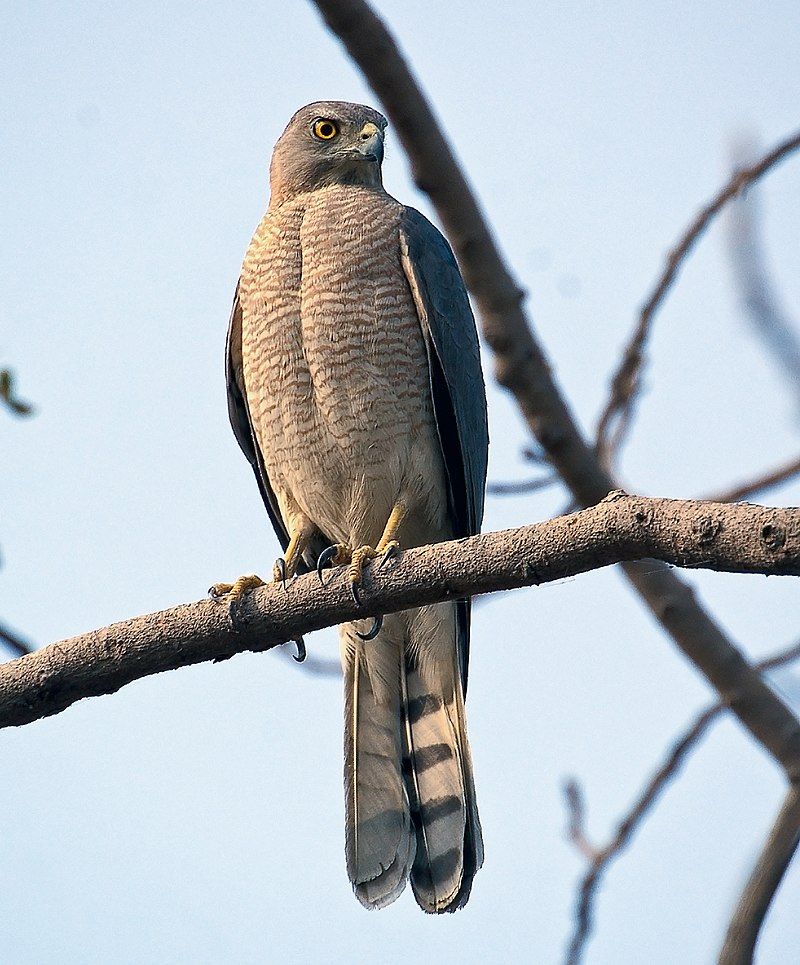
The shikra is a small bird of prey found in both Asia and Africa. It belongs to the family of Accipitridae and is also known as the little banded goshawk.
Generally, African forms of the shikra are considered subspecies of the bird, though some believe they could represent a separate species. The shikra is a bird of remarkable agility and is known for its ability to quickly change direction in mid-flight.
It has a dark gray or brownish-gray body with a white and black pattern on its wings and tail. In addition, it has a distinctive yellow or orange eye ring. The shikra has a wide distribution range across both Asia and Africa, making it a relatively common bird of prey.
The shikra feeds mostly on insects, small mammals, reptiles, and birds. It often hunts by hovering in the air and then making a quick dive to capture its prey. It is also known to hunt in pairs or groups, making it a formidable predator.
The shikra is a fascinating bird of prey that plays an important role in its ecosystems. Its impressive hunting abilities make it an important predator that helps to maintain a balance in the food chain.
Furthermore, its wide distribution range means it can be found in many parts of the world, providing us with an opportunity to study and appreciate its beauty and behavior.
| Kingdom | Animalia |
| Phylum | Chordata |
| Class | Aves |
| Order | Accipitriformes |
| Family | Accipitridae |
| Genus | Accipiter |
| Species | A. badius |
15. Steppe Eagle
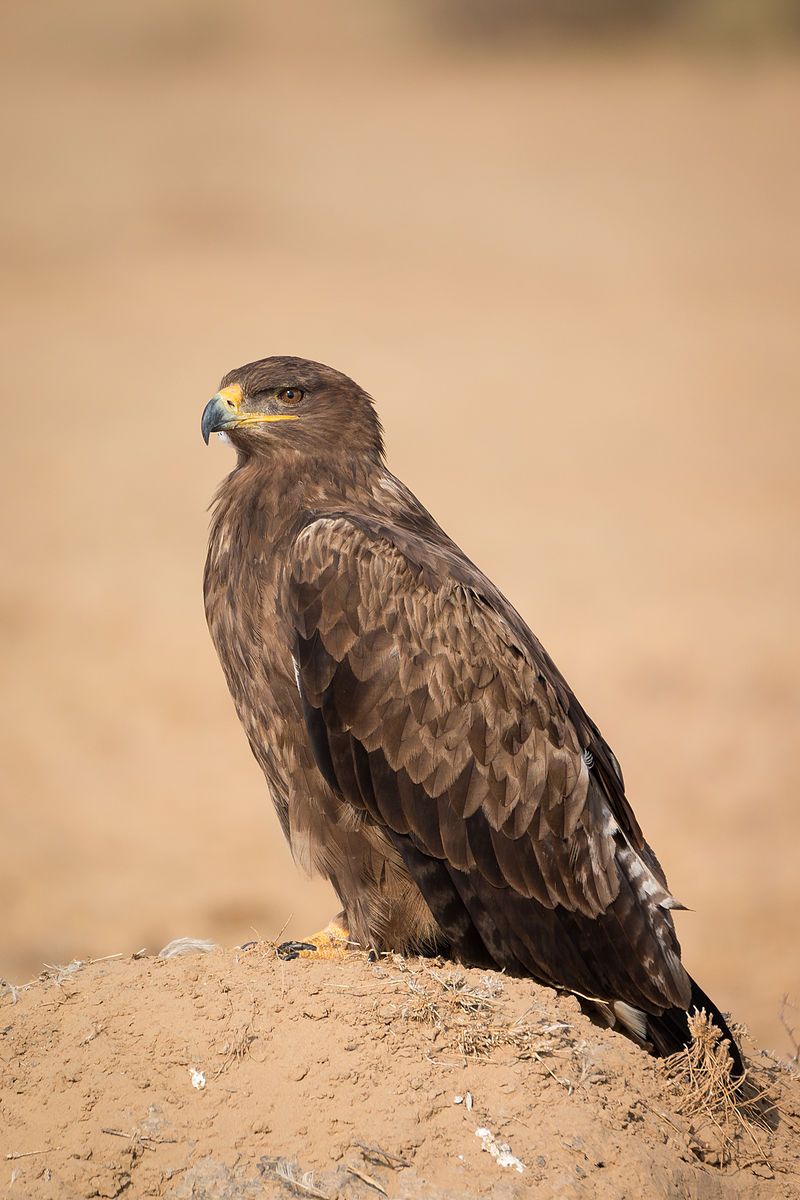
The Steppe Eagle is a large bird of prey that is part of the Accipitridae family. This family is comprised of birds known as raptors, which are known for their sharp talons and powerful beaks.
The Steppe Eagle specifically belongs to the Aquilinae subfamily, which is more commonly referred to as “booted eagles.” This is due to the fact that their legs are well-feathered, which differentiates them from other members of the Accipitridae family.
The Steppe Eagle is a powerful hunter, capable of taking down prey larger than itself with its sharp talons. It is also a very large bird, with wingspans that can range from five to six feet.
Its feathers are a mottled brown and white or sandy color, and its eyes are bright yellow. Its wings are strong and its flight is graceful and efficient, allowing it to soar for long distances in search of food.
| Kingdom | Animalia |
| Phylum | Chordata |
| Class | Aves |
| Order | Accipitriformes |
| Family | Accipitridae |
| Genus | Aquila |
| Species | A. nipalensis |
16. White-rumped Vulture
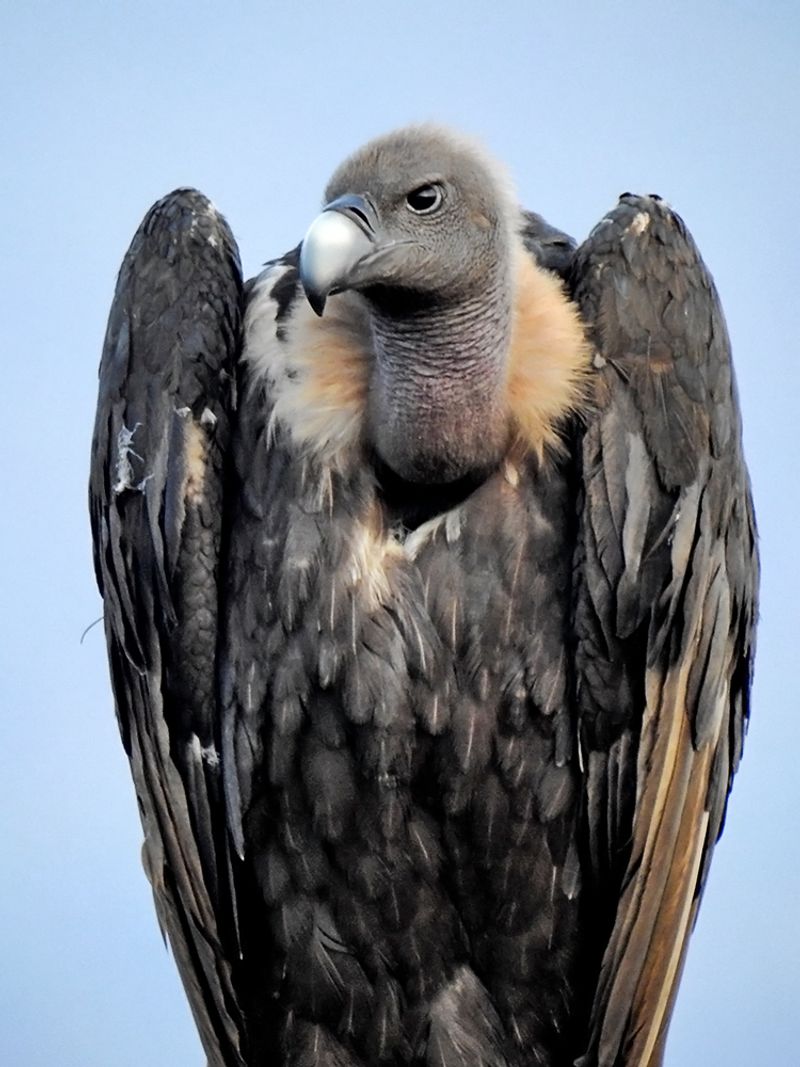
The white-rumped vulture is a species of Old World vulture that is native to South and Southeast Asia. This species has been in trouble since 2000 when it was listed as Critically Endangered on the IUCN Red List.
This is because the population of white-rumped vultures has declined drastically over the years. The primary cause of this decline in population is diclofenac poisoning. Diclofenac is a commonly used drug to treat pain and inflammation in livestock.
Unfortunately, when livestock that has been treated with this drug die, their carcasses become a source of food for the vultures. The vultures, in turn, become poisoned by the diclofenac and die from kidney failure.
This has been a major contributor to the decline in the white-rumped vulture population.In order to help protect this species, conservation efforts have been put into place.
These efforts have included the banning of diclofenac in certain countries, as well as the implementation of vulture-safe zones, where vultures can feed without fear of being poisoned.
Additionally, there have been captive-breeding programs set up to help boost the population of this species. Overall, the decline in the white-rumped vulture population is a serious problem that needs to be addressed.
Through conservation efforts and education, we can help protect this species and ensure its survival for future generations.
| Kingdom | Animalia |
| Phylum | Chordata |
| Class | Aves |
| Order | Accipitriformes |
| Family | Accipitridae |
| Genus | Gyps |
| Species | G. bengalensis |
17. Himalayan Vulture
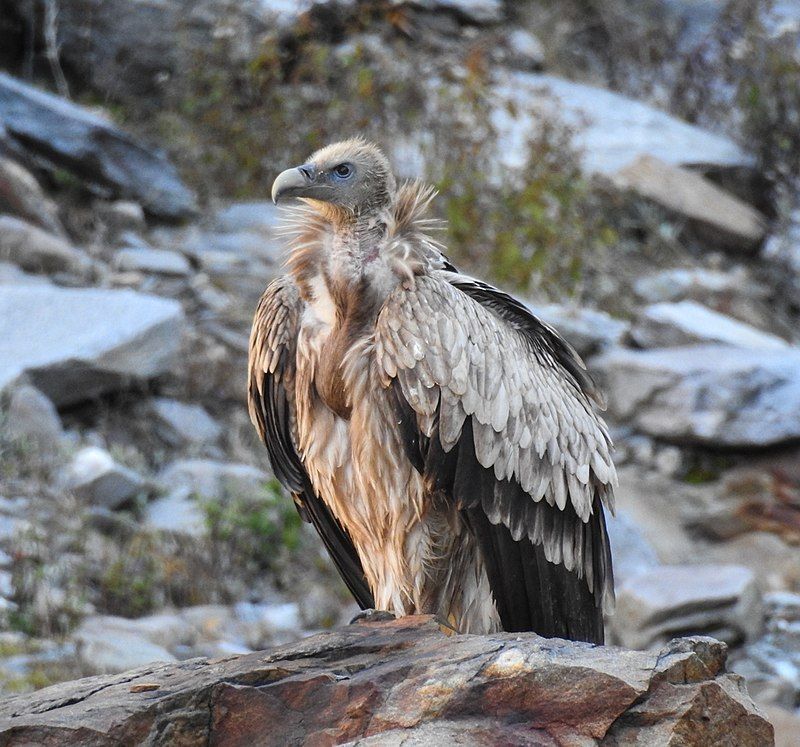
The Himalayan Vulture, also known as the Himalayan Griffon Vulture, is an Old World species of vulture that is native to the Himalayan mountain range and surrounding Tibetan Plateau.
It is considered to be one of the two largest species of Old World vultures and is classified as a true raptor.
Unfortunately, due to a variety of threats, such as habitat destruction and poisoning, this species is listed as Near Threatened on the IUCN Red List. Himalayan Vultures are massive birds, with a wingspan that can reach up to 8.5 feet wide.
The plumage of this species is mostly white, with a grey head and neck. They also have a distinct double-tipped tail, which is black and white in color. These birds feed entirely on carrion, scavenging for dead animals to eat.
They are known to form huge flocks, sometimes hundreds of birds strong, in order to search for food in a wider area. Himalayan Vultures are facing a number of threats, which is why their population is declining.
These threats include habitat destruction, as the Himalayan mountain range is being increasingly developed for human use. They are also exposed to a variety of poisons, either through their food or through contact with humans.
As a result, their population is decreasing, and they are now listed as Near Threatened on the IUCN Red List. Conservation efforts are underway in order to protect this species and ensure their population does not decrease further.
| Kingdom | Animalia |
| Phylum | Chordata |
| Class | Aves |
| Order | Accipitriformes |
| Family | Accipitridae |
| Genus | Gyps |
| Species | G. himalayensis |
18. Imperial Eagle
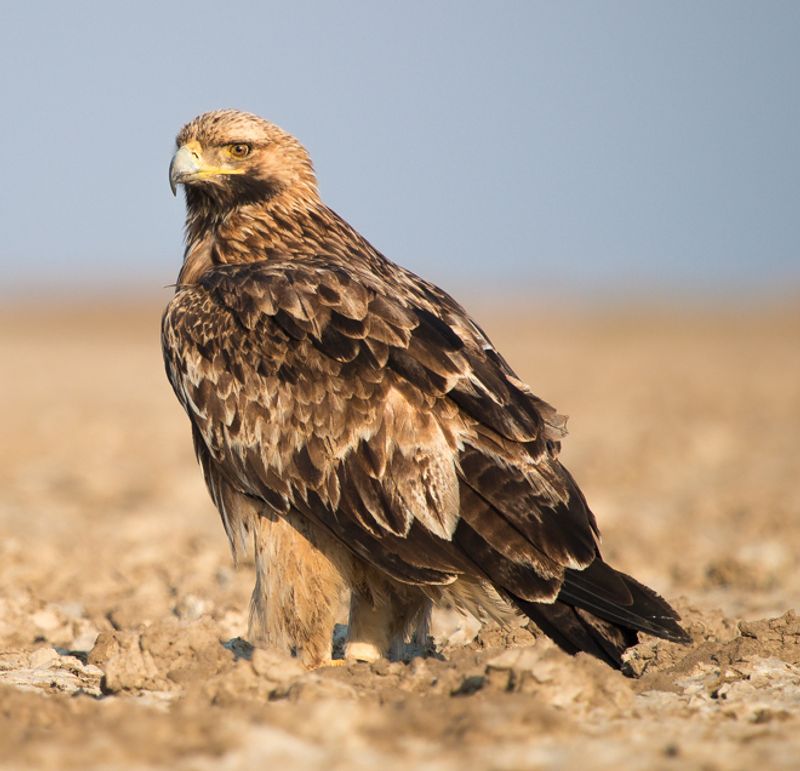
The eastern imperial eagle is a majestic bird of prey that is found in various parts of the world, from southeastern Europe to West and Central Asia. Many populations of the eagle are migratory, meaning they will travel to different areas depending on the season.
During the winter months, these birds can be found in northeastern Africa, the Middle East, and South and East Asia. They are large birds, with impressive wingspans that can exceed seven feet in some cases. They have powerful talons and beaks that they use to hunt their prey.
Their diet consists of small mammals, reptiles, and other birds, although they also scavenge for food if necessary. Eastern imperial eagles are an incredible sight to behold, and their presence in any area is a sign of a healthy, well-balanced ecosystem.
| Kingdom | Animalia |
| Phylum | Chordata |
| Class | Aves |
| Order | Accipitriformes |
| Family | Accipitridae |
| Genus | Aquila |
| Species | A. heliaca |
19. Indian Paradise Flycatcher
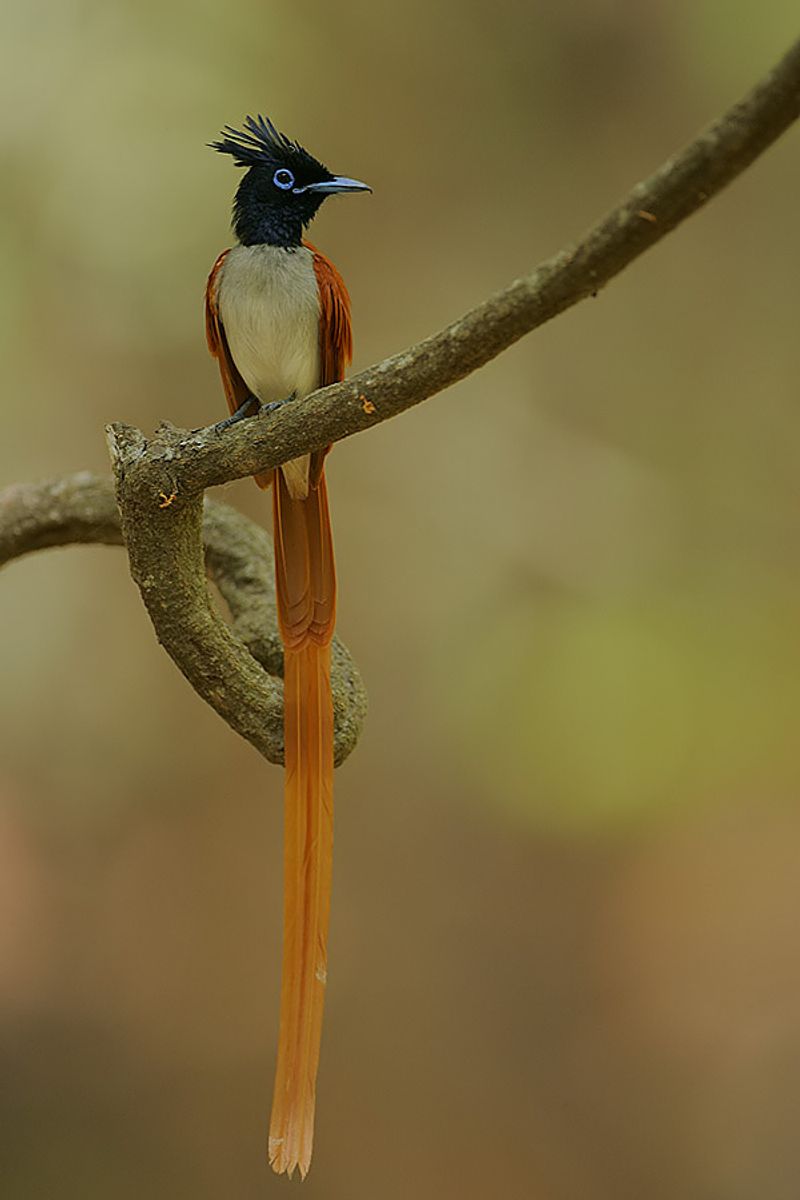
The Indian paradise flycatcher is a species of bird that is found in Asia. It is a medium-sized passerine, meaning it is a member of the perching bird family. It is widely distributed across the region, and its global population is considered to be stable.
For this reason, it has been listed as Least Concern on the IUCN Red List since 2004. Its native range includes the Indian subcontinent, Central Asia, and Myanmar. Its habitat includes woodlands, scrublands, and tropical forests.
It feeds primarily on insects, but it also eats fruit and nectar. It is very colorful, with males having black and white plumage and a long tail. The female is brown with white spots and a short tail.
| Kingdom | Animalia |
| Phylum | Chordata |
| Class | Aves |
| Order | Passeriformes |
| Family | Monarchidae |
| Genus | Terpsiphone |
| Species | T. paradisi |
20. Red-vented Bulbul
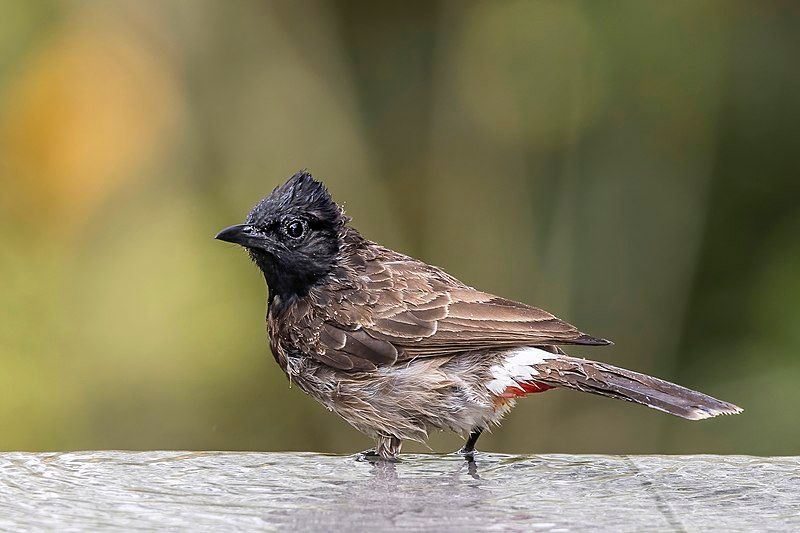
The red-vented bulbul is a species of passerine bird that belongs to the bulbul family of birds. It is native to the Indian subcontinent, from India to Sri Lanka, and further east to Burma, Bhutan, and Nepal.
It is a resident breeder, meaning it breeds year-round in its native range, rather than migrating seasonally. It is a common bird found in areas of open woodland, scrub, and cultivation.
The red-vented bulbul is a medium-sized songbird with a distinctive black head, crest and tail, and bright red vent, or under-tail coverts. Its upper parts are greyish-brown, while the underparts are white.
It has a long, curved beak that it uses to feed on a variety of fruits and insects. It is an active and noisy bird, often seen in small groups foraging in the trees. It has a loud, melodic call that is often heard in its natural range.
The red-vented bulbul is an important species in its native range, playing a vital role in the ecosystem by dispersing seeds and controlling insect populations.
| Kingdom | Animalia |
| Phylum | Chordata |
| Class | Aves |
| Order | Passeriformes |
| Family | Pycnonotidae |
| Genus | Pycnonotus |
| Species | P. cafer |
21. Oriental Turtle Dove
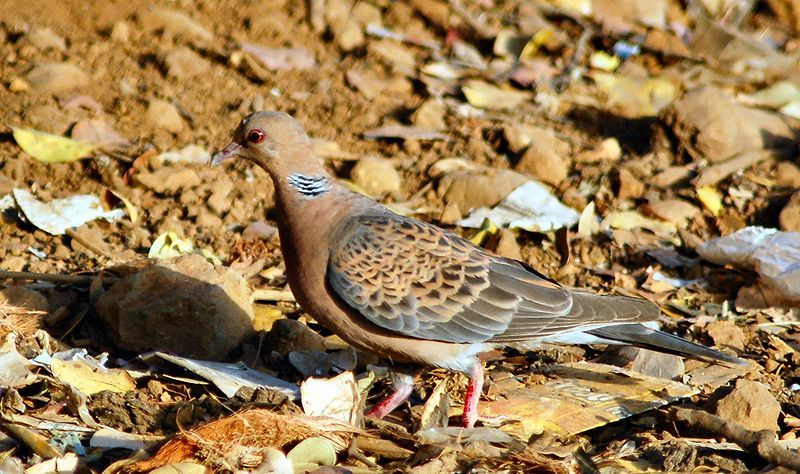
The Oriental turtle dove (also known as the rufous turtle dove) is a species of bird in the family Columbidae. It is native to a wide range of regions stretching from Central Asia to Japan.
This bird is quite distinct from other species of turtle doves, as it is easily identifiable by its unique pattern of plumage.
In fact, the populations of this species show variations in the patterning of their plumage and have been divided into at least six distinct subspecies. These subspecies differ from each other in subtle ways, such as variations in the colors of their feathers.
The Oriental turtle dove is an important species in its native habitats, and it plays an important role in the ecosystem.
| Kingdom | Animalia |
| Phylum | Chordata |
| Class | Aves |
| Order | Columbiformes |
| Family | Columbidae |
| Genus | Streptopelia |
| Species | S. orientalis |
22. Sociable Lapwing
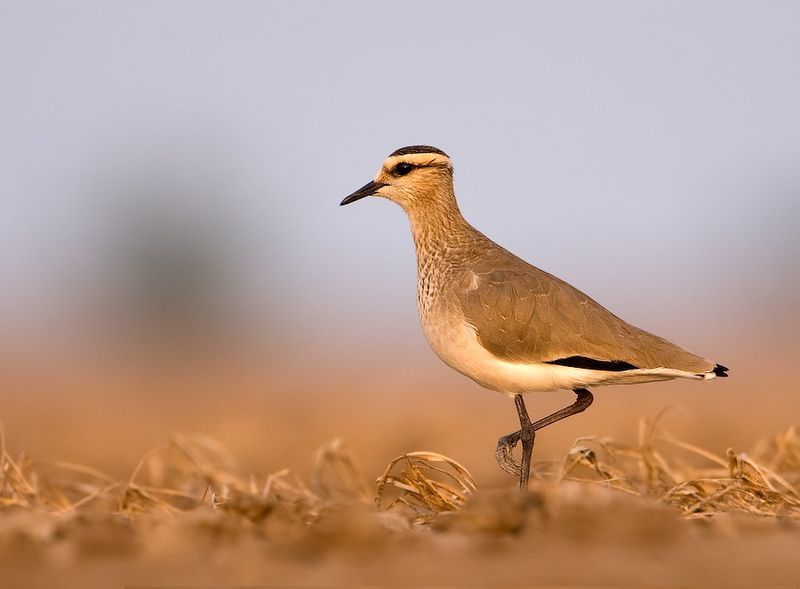
The sociable lapwing is a species of wader bird in the plover family and is also referred to as the sociable plover in the UK. This species is fully migratory, meaning it migrates to different areas depending on the season.
It breeds in the country of Kazakhstan and then winters in the Middle East, Indian Subcontinent, and Sudan. The sociable lapwing has been referred to in historical literature as the Black-bellied lapwing, which is likely due to its black belly feathers.
This species of bird is known for its sociable behavior, often gathering in large flocks and engaging in group activities. Its diet consists of small invertebrates, such as insects and worms, which it picks up from the ground.
The sociable lapwing is an important species to many ecosystems, as it helps to keep insect populations in check and can serve as a food source for other animals.
| Kingdom | Animalia |
| Phylum | Chordata |
| Class | Aves |
| Order | Charadriiformes |
| Family | Charadriidae |
| Genus | Vanellus |
| Species | V. gregarius |
Conclusion
Birds are an important part of the natural environment in Kandahar. They provide food for people, animals, and insects, and they help to maintain the balance of nature.
By understanding and observing birds in Kandahar, we can gain a better understanding of our environment and the many species that inhabit it.
Furthermore, by protecting and preserving birds in Kandahar, we can ensure that our environment remains healthy and vibrant for generations to come.